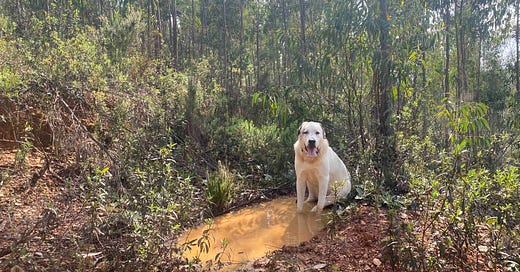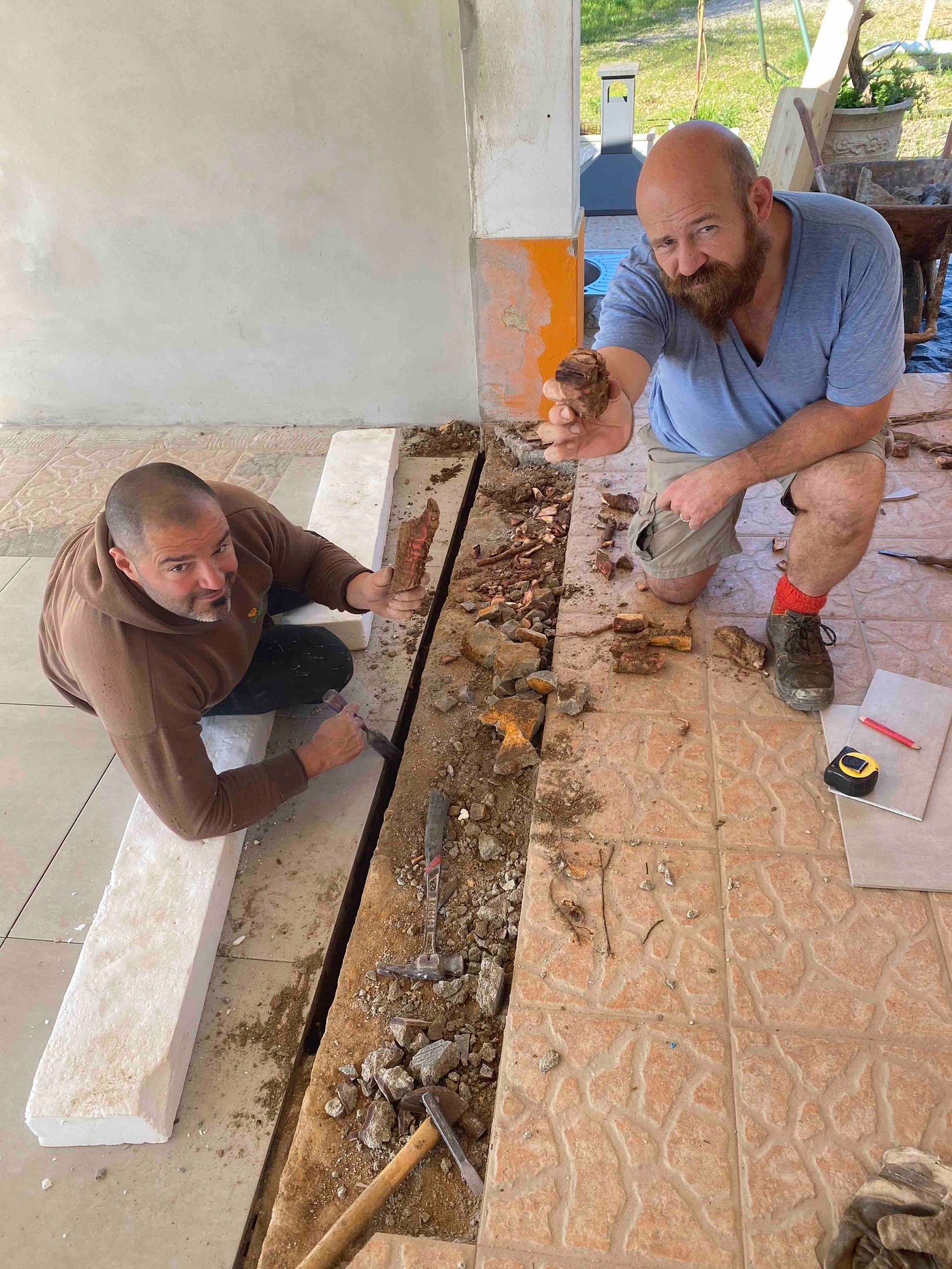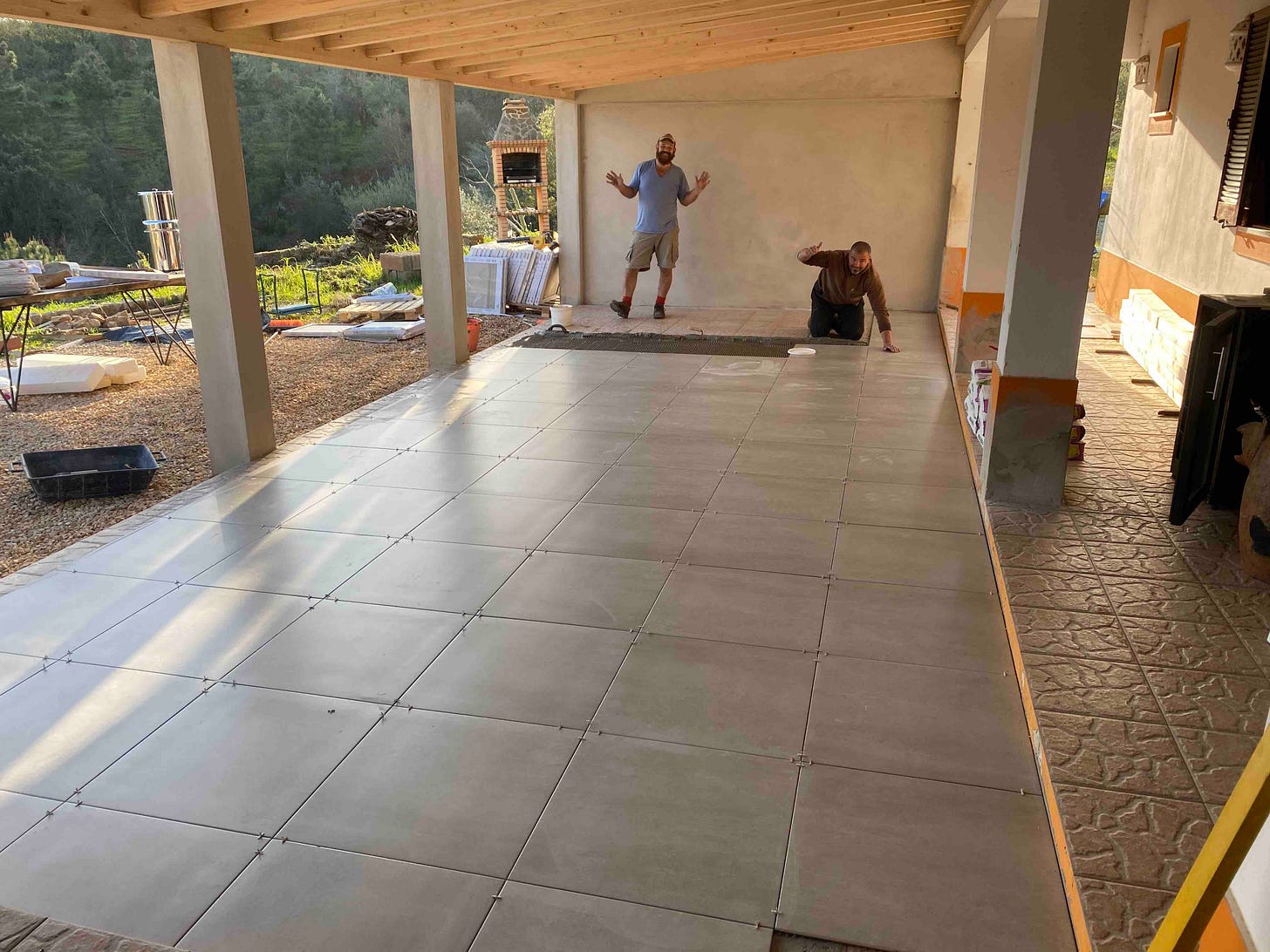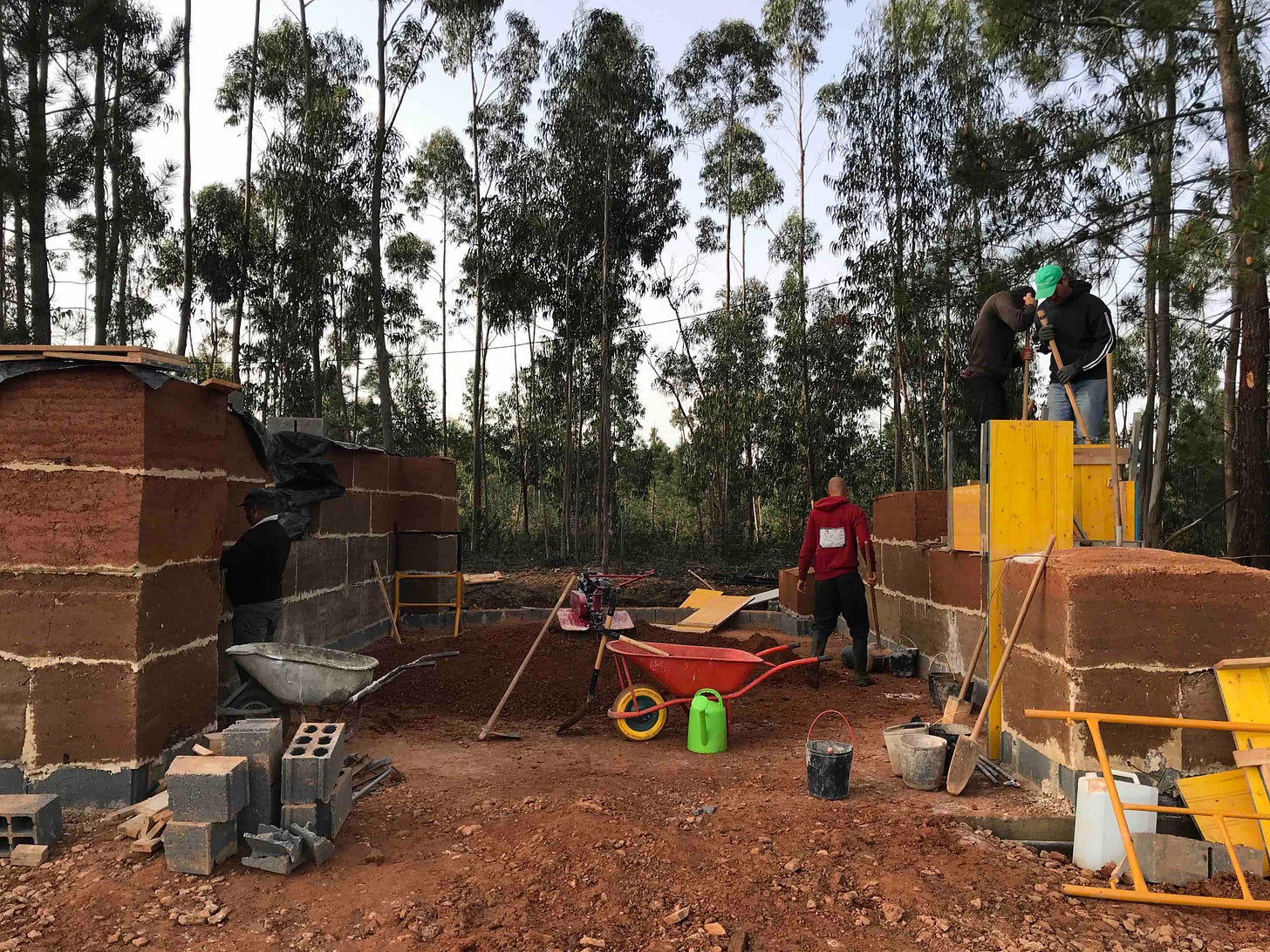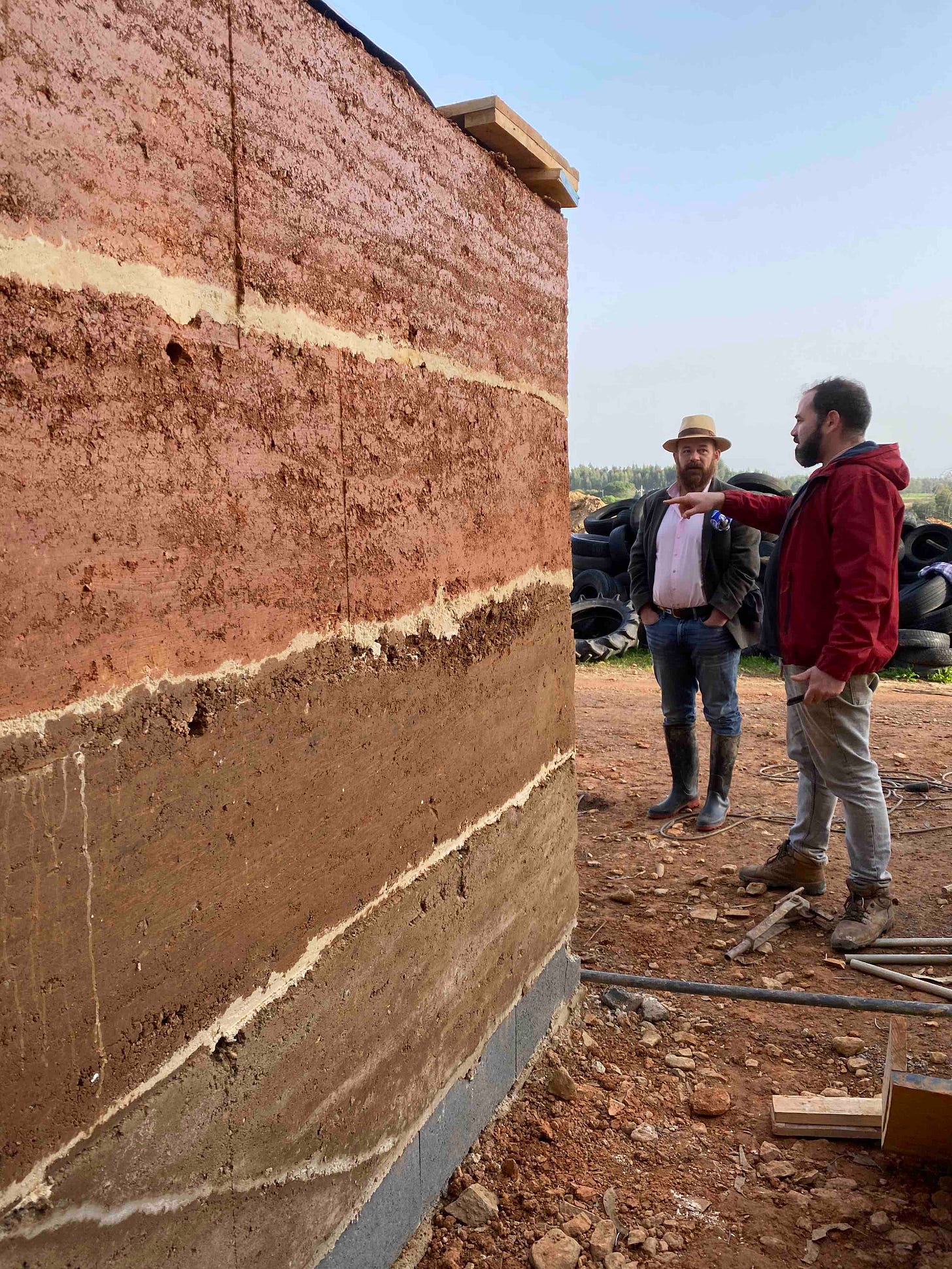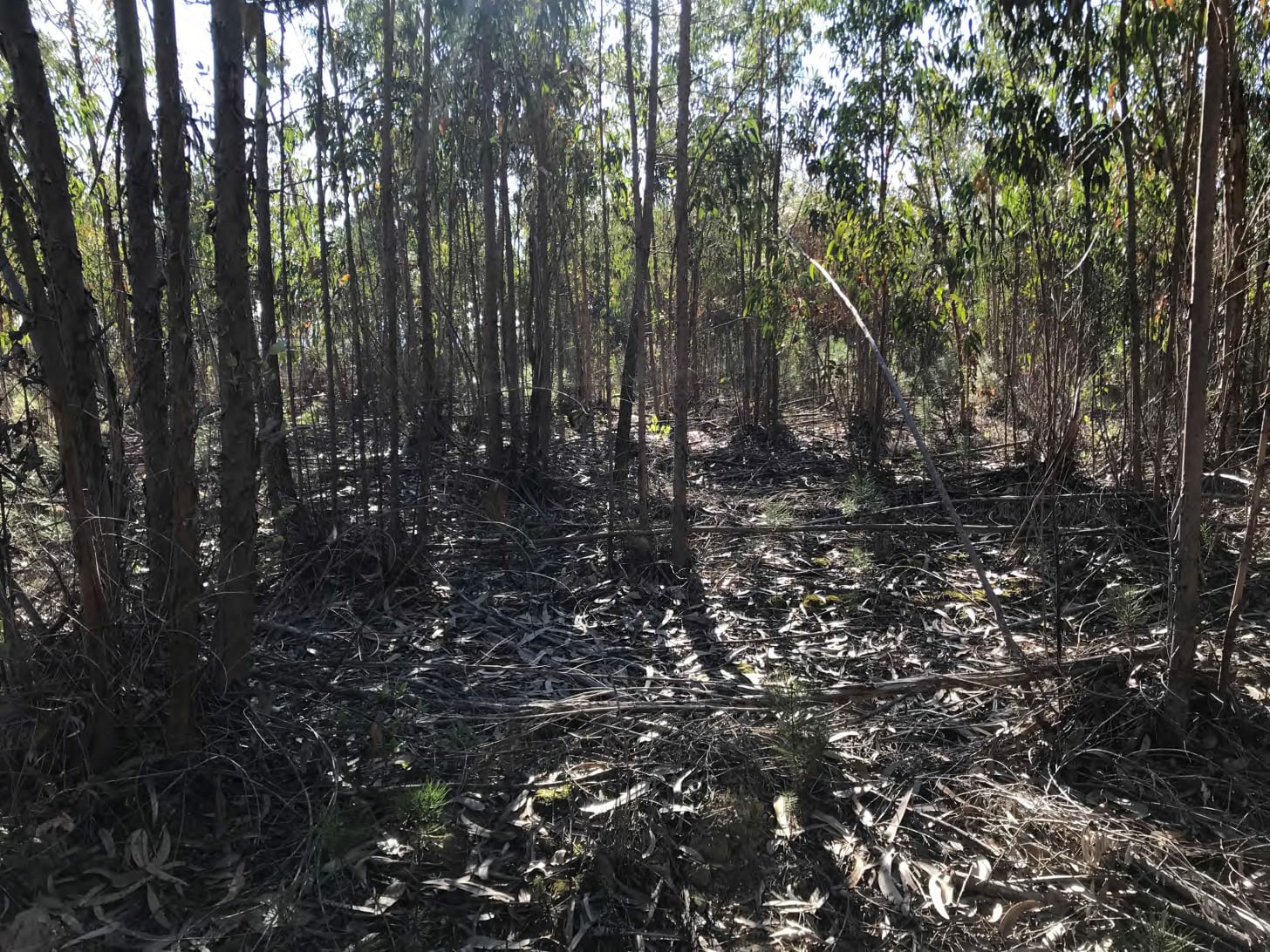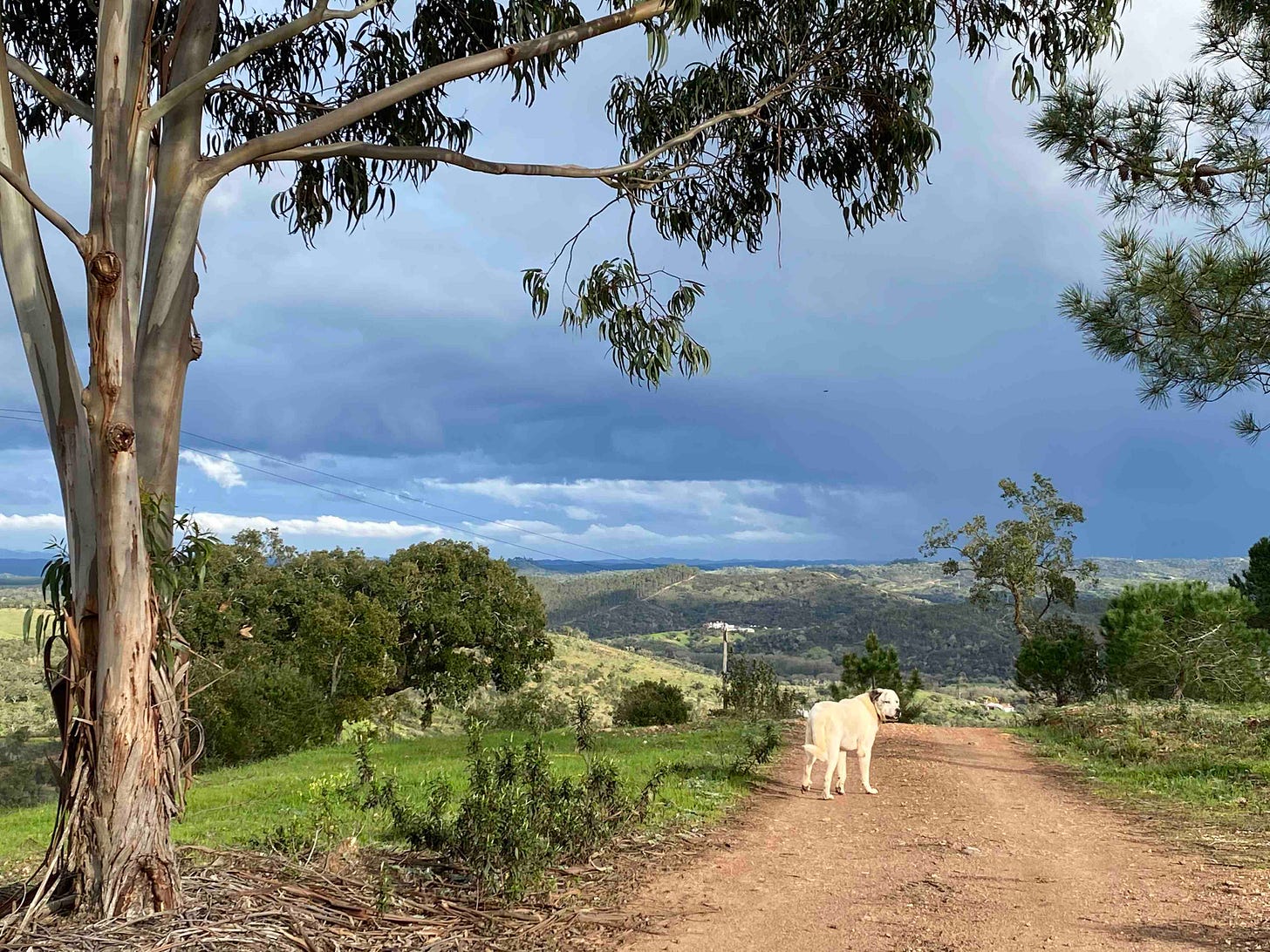Just as guard-dog Garfunkel was starting to get comfortable with peace and quiet around the house, the nasty, noisy building work is back, and he’s changed the security arrangements to now protect us from a distance.
I’m sure the big lad’s version is that he can better monitor all angles of approaching threats from the nest he’s made under an orange tree a long way from the house.
We just think he’s scared of the angle grinder.
After a six-week hiatus awaiting a delivery, Rui’s back to teach us the new skills of floor-tiling and door-fitting…and in doing so we have discovered a new enemy under the patio.
I fear it could become our nemesis in the years ahead, and it comes with the territory: fast growing tree roots and creepers.
The summers here are extremely dry and the rain we’ve thankfully had in the last couple of months follows three years of drought, and so the plants have been digging deep in search of water.
A few months ago, I discovered the cause of the blocked guesthouse drains was tree roots which had travelled many metres underground.
But the more pressing problem was the patio, and while there are far more disturbing things you might find under a patio, this was as surprising as it was impressive.
Perhaps it’s karma for the brutal ‘cruel to be kind’ approach we took to pruning the grape vines last week?
All the work we’ve been doing with concrete, roofing and doors is to create a reception room from an open patio, and we are now laying new tiles on top of the old ones.
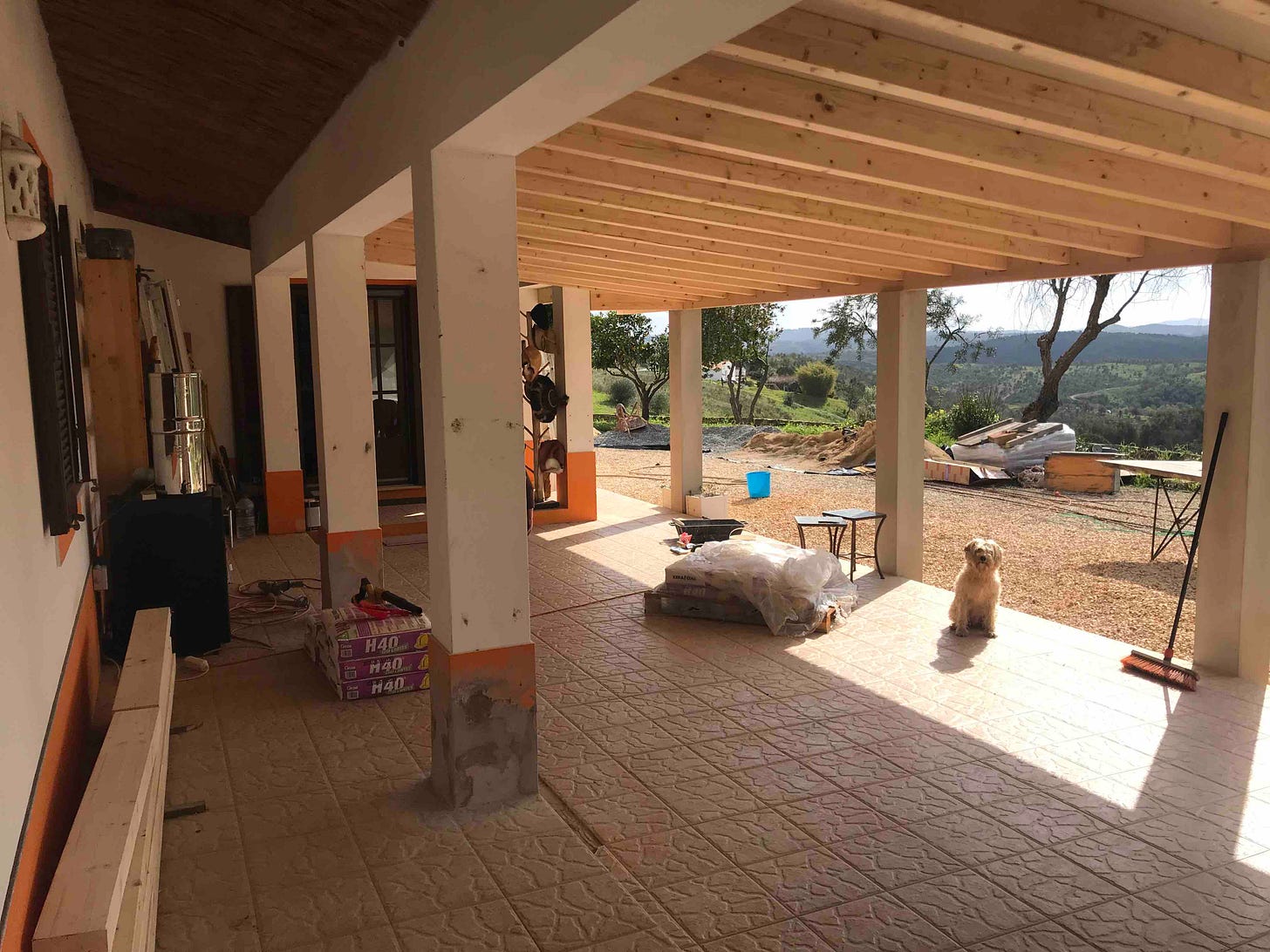
We dug out a couple of beautiful bougainvillea plants and a vine-like flowering thing and are still hoping they’ve survived the transition into pots, but their legacy lives on between the concrete slabs.
A thick vine three centimetres in diameter had squeezed its way through a gap a foot down and forced a few tiles up.
Undetected, it could have wrecked our new floor within a year or two.
It took a morning with hammers and chisels to dig it out and then remove the crumbling concrete.
In retrospect it would have been better to put the safety glasses on before getting a stone chip in my eye, rather than after.
(I think it has finally worked its way out after a couple of days of blurred vision and eyewashes).
We also had a close encounter with a scolopendra centipede which was living in the gap in the concrete – the last time I was bitten by one of those it didn’t go well, and I still have the scar!
But because of Rui’s planning and expertise with Garf’s favourite angle grinder trimming the tiles, and despite my general clumsiness and inability to mix the glue to the right consistency, we’re well on the way to having a fabulous new floor.
It’s so satisfying to work on this ourselves – with expert guidance of course – and to understand how jobs can be delayed and how to problem-solve a way out of them.
While we battled an old plant, Simon & Garfunkel found a new enemy of their own: estate agents.
Garf is an extremely big dog who takes his work very seriously.
When’s he’s on shift – which is whenever he’s outside (as he insists on being every night) – he’s patrolling the land, or at the very least monitoring it from under an orange tree.
And while we’ve watched him become part of the family and know his kind-hearted nature, I presume that’s not obvious when 70kg of dog runs at a car all barks and teeth.
I’ve honestly not seen him quite so aggressive, but then again, I don’t think he’s ever met an estate agent.
Our wonderful German neighbours Franz and Erni have put their house up for sale.
They arrived here 23 years ago – at about the age we are now – and built their place from scratch.
They’re off the grid as well and don’t have much power or water, and although they love this valley, they need to be closer to family and better health care back in Germany.
We’d love to buy their place if we could afford it, but the price the estate agent has set is very high – perhaps Garf could sense it.
Simple Simon’s anger was more specifically directed at the drone which was taking aerial photos for the listing – I’m not sure what he has against drones but they make him extremely angry.
Our focus is still our guest lodge project, but we’ve not yet had any news from the tourism authority on whether they will approve the funding.
We’re planning to build in taipa which is an ancient Roman technique of using the clay from our own land and turning it into bricks – and we had a chance to visit a taipa construction site last week.
We met Pedro Garrett by chance at Aterra – an eco-camping resort on the other side of town that we were visiting to learn how to link underfloor heating to a wood-fire.
Francisco and Claudia run a beautiful place with glamping in the summer and Pedro is now building in taipa for them.
It’s a long process - and a lot of hard work - to dig out the right clay and then compress it by hand into coffin-sized bricks.
They are built on top of each other in situ and the thick mud walls help keep the houses warm in the winter and cool in the summer as the moisture evaporates.
It’s seasonal and specialised, and so taipa builders are always in demand.
Obviously, it’s easier to dig in winter when the ground is soft, but difficult to build when it’s raining, so it’s a traditional technique that’s at the mercy of the elements.
We were worried the delay to our timeline would prevent us building for six months, but Pedro and his company Sudoeste Verde is trying to extend the construction season…and to encourage more people to learn how to build in taipa.
Of course our land would need to be ready to go if we do get approval, and the first task is to clear two hectares of eucalyptus forest on the flat area with the best view where we plan to build.
Once it gets too hot and dry, chainsaws are banned because of the fire risk, and so we’ve decided to start that work now and clear it while we can.
Eucalyptus trees need a lot of water and they burn like torches when there’s a forest fire, so we are keen to remove them anyway.
There are huge plantations across Alentejo, linked to previous subsidy programmes.
They’re harvested for paper and biofuel every ten years or so, but ours were not well looked after and are too young to be worth much.
And taking them out doesn’t just involve cutting them down – the deep roots have to be dug out with huge machinery.
It’s a big job, especially as we’d like to save the young pines we’ve been encouraging and the medronho bushes (strawberry trees) which produce fruit for the local fire water.
And when that work starts, I guess Garf might decide on a security upgrade: that the best way to protect us is from the opposite hill, dominating the high ground and watching over us from an even safer distance.
Thanks so much to everyone who sent us comments and personal consultations about our logo designs. Ana and Lara are working on some new versions…watch this space!

